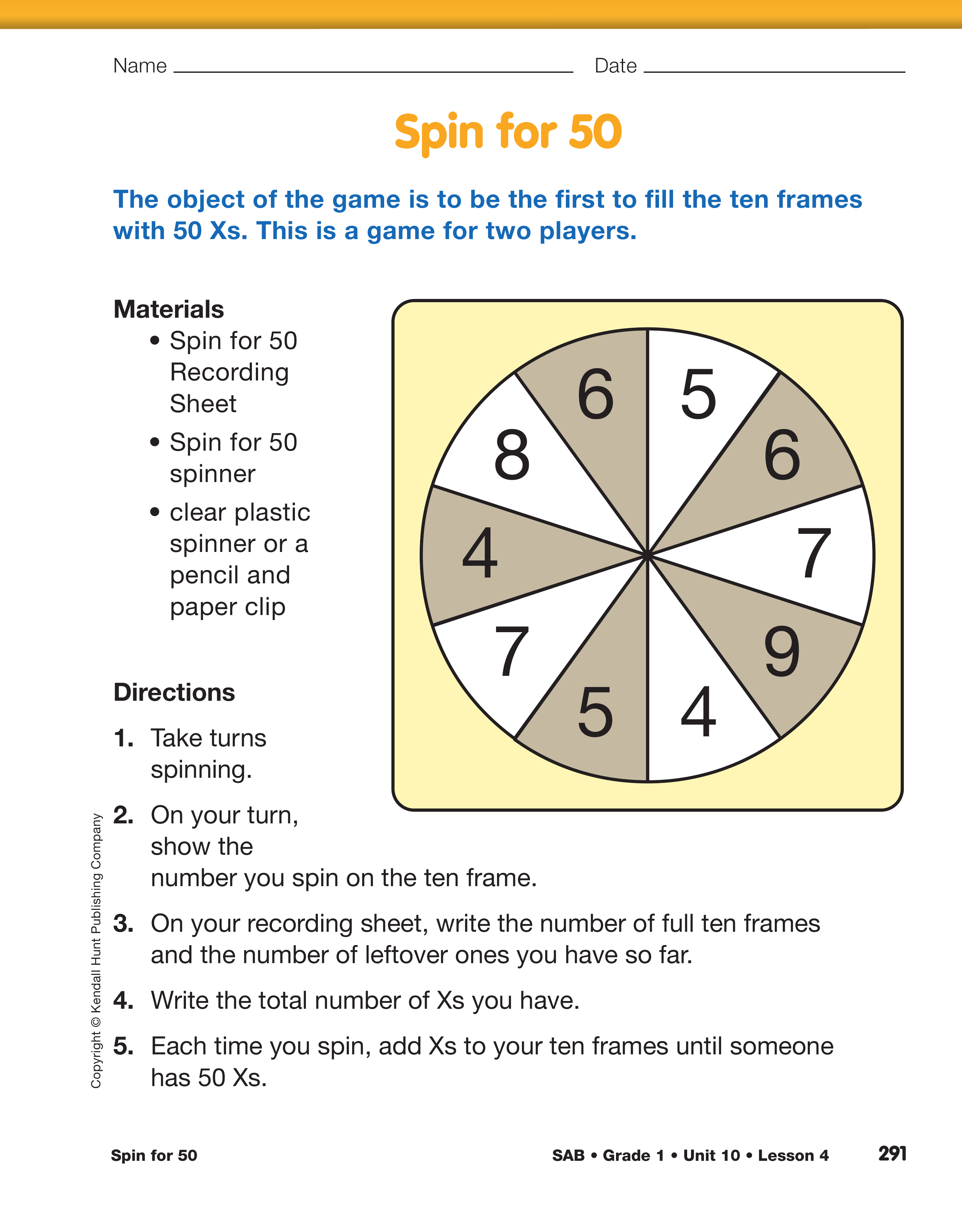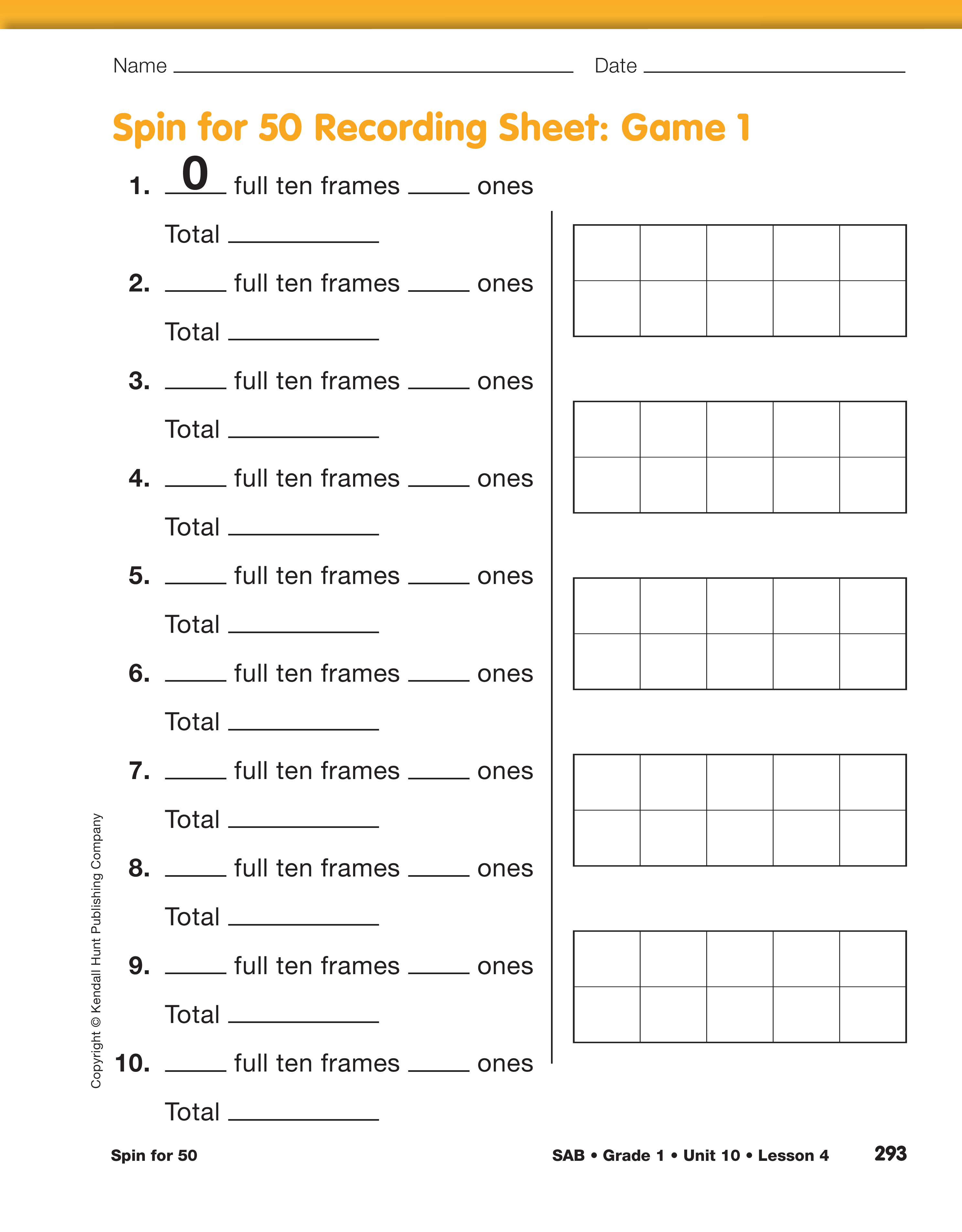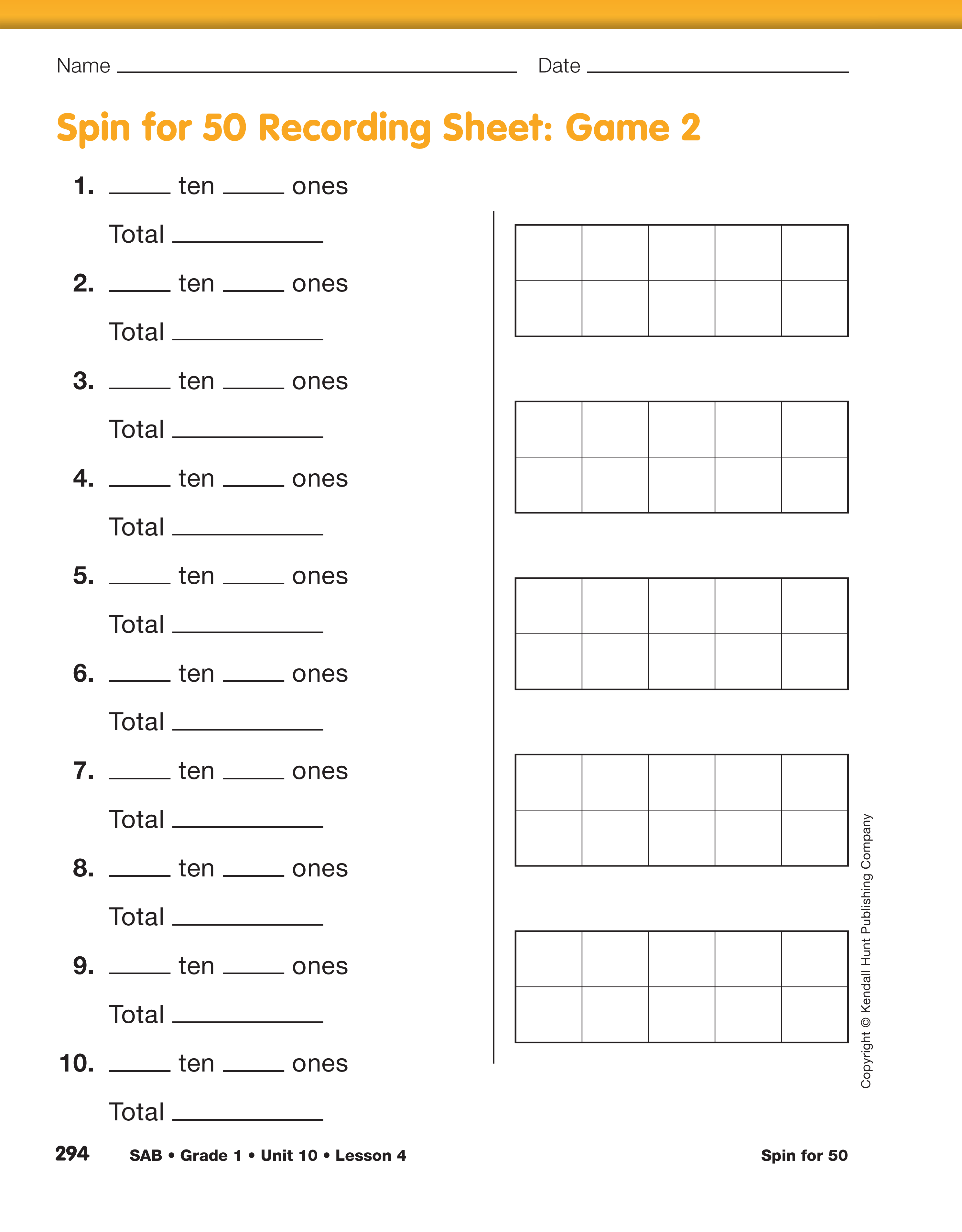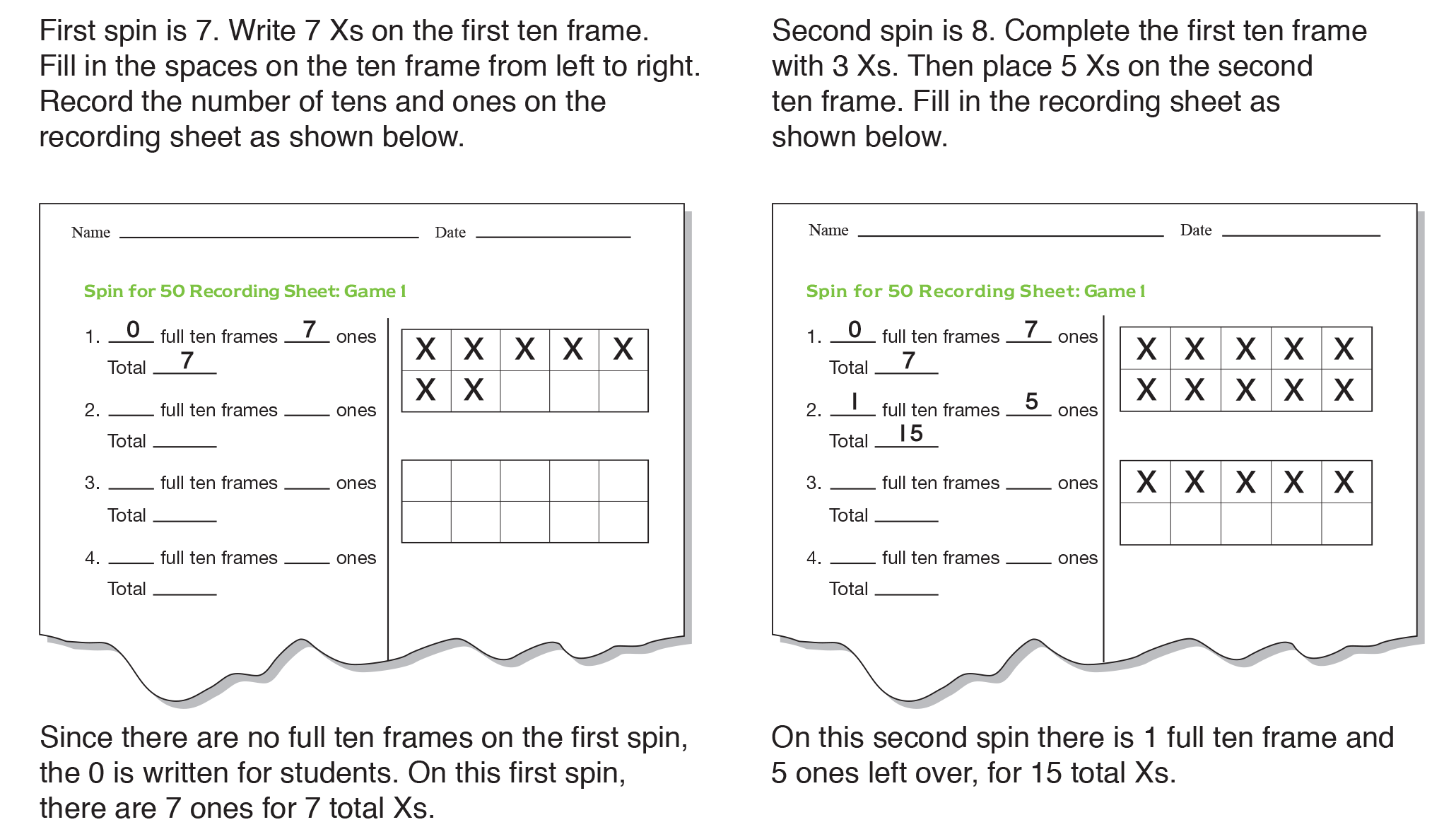Introduce Spin for 50. Tell students they are going
to play Spin for 50 in pairs. Introduce the game by
showing a display of the Spin for 50 page and
reviewing the directions with the class. Demonstrate
the game with a student volunteer. Show a display of
the Spin for 50 Recording Sheet: Game 1. Figure 2
shows an example for two spins.
As you demonstrate playing the game, ask questions
to evaluate students' understanding of the directions
and goal of the game.
- How many 10 frames are on the recording sheet?
(5)
- The winner of the game is the first person to fill in
all the ten frames with Xs. How many Xs will it take
to fill all the ten frames on your recording sheet?
(50 Xs to fill the ten frames.)
- How do you know? (Since there are 5 ten frames,
I can count by tens: 10, 20, 30, 40, 50.)
- To take a turn, I spin the spinner. I got a 7. How
should I fill in the ten frame with seven Xs? Show
me. (Fill the 10 frame left to right and top to bottom.)
- On my first turn, I have just 7 Xs. How many full
ten frames do I have right now? (none or 0)
- That is why there is a zero in the first blank. How
many ones do I have? (7)
- What should I write in this blank that is for the
number of ones? (7)
- How many total Xs do I have after my first turn?
(7) What will I write in the blank for the total for my
first turn? (You have 7 Xs. Write a 7 there.)
Ask a student volunteer to take a turn. Ask similar
questions about his or her spin. Then model taking a
second turn as shown in Figure 2.
- On my second turn I got an 8. I need to add 8 Xs to
my total. I show that by adding Xs to the ten
frames. I start by completely filling in the first ten
frame with Xs and then starting a new 10 frame.
How many of my 8 Xs will it take to fill the first
10 frame? (Three Xs complete the first ten
frame.)
- How many Xs will be left over to put in the second
ten frame? (Five Xs will go on the second ten
frame.)
- How many full ten frames do I have at the end of
my second turn? (one full ten frame)
- How many ones do I have left over? (five ones left
over)
- How many total Xs do I have after my second
turn? How do you know? (15 Xs. One full ten
frame is ten and another row of five is 15 total
Xs.)
Play Spin for 50. As students play the game, circulate
and ask questions about the number of Xs a
player has and how many more he or she needs to
win.
- How many full ten frames do you have now? How
many tens is that? How do you know?
- How many tens and how many leftover ones do
you have?
- How many total Xs do you have? How do you
know?
- How many more Xs do you need to reach 50 Xs?
How did you find out?
Tell students they will play a second game using the
Spin for 50 Recording Sheet: Game 2.
Ask students
to compare it to the first recording sheet.
- How are the two recording sheets alike? (Possible
response: They both have five empty ten frames.
They both have 10 places for writing the number
of Xs.)
- How are they different? (Possible response: The
first one says "full ten frames." The second one
just says "tens.")
- If we record our spins and total that way, will it
change the number of Xs? Why or why not? (No.
Each full ten frame has ten Xs so it is the same as
counting tens.)
As students play the game a second time, ask questions
as before. Model using the grouping language
of "tens and ones" along with the conventional number
names for the total number of Xs (e.g., 36 is
3 tens and 6 ones). Encourage students to use the
same language.
As you observe students playing the Spin for 50 game,
assess students' abilities to represent and identify numbers
to 50 using ten frames [E1], group and count objects by tens
and ones, and represent the partitions of two-digit quantities
as tens and leftover ones [E2].
For targeted practice, make additional copies of theSpin for 50
game and recording sheets in the Student Activity Book
and place them along with spinners in a learning center.
Students can play the game with a partner.

















